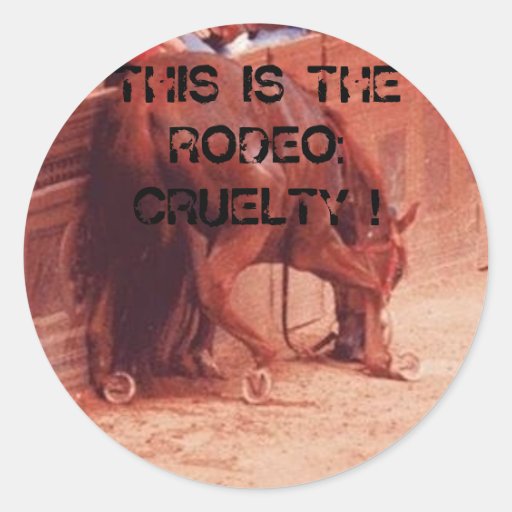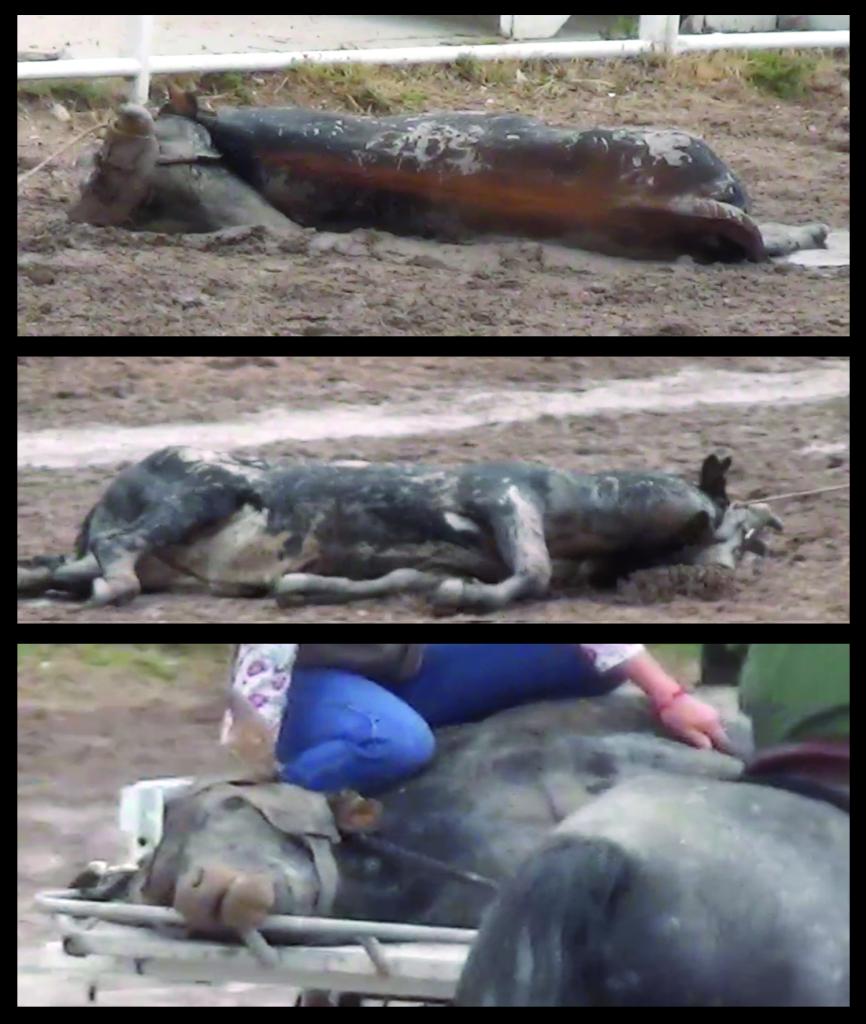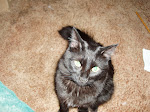

Which do you think is worse? The person who just doesn't care if an animal is terrified or hurt, or the person who doesn't want to know because it might ruin the experience for them? I really hate the rodeo days here in Tucson. The news never reports on the fact that there are protesters, let alone that there is some thing to protest about rodeos. I was asked today why I wasn't going to go to the rodeo, and when I tried to explain about the calves that have to be destroyed because of broken legs, necks, backs or tails, I was cut off with the same thing I hear when people ask why I'm not a vegetarian instead of a vegan, or why I don't drink milk or eat eggs.
"Don't tell me that, you will ruin it for me." To which I always say, "good, it should be ruined for you". But this time it really made me think. Are the people who knowingly torture and maim animals worse than those that have an inkling, but don't want to hear any details, lest the experience be ruined for them?

Don't believe rodeos are so bad? here are a few expert opinions:
The Humane Society of the United States (HSUS) takes a position of opposition to all rodeos and rodeo events:"The HSUS opposes rodeos as they are commonly organized, since they typically cause torment and stress to animals; expose them to pain, injury, or even death; and encourage an insensitivity to and acceptance of the inhumane treatment of animals in the name of sport. Accordingly, we oppose the use of devices such as electric prods, sharpened sticks, spurs, flank straps, and other rodeo equipment that cause animals to react violently, and we oppose bull riding, bronco riding, steer roping, calf roping, "wild horse racing," chuck wagon racing, steer tailing, and horse tripping."[20]
From PETA:
"Rodeo performers have been documented beating, kicking, and shocking normally docile cows and horses in chutes and holding pens. “Bucking broncos” and steers are provoked with electric prods, sharp sticks, caustic ointments, and the pinching “bucking” strap. By the time the animals are released into the arena, they are frantic. Calves, roped when running, have their necks snapped back by the lasso, often resulting in neck and back injuries, bruises, broken bones, and internal bleeding.After their short and painful “careers,” animals in rodeos are sent to the slaughterhouse. Dr. C.G. Haber, a veterinarian who spent 30 years as a federal meat inspector, describes the animals discarded from rodeos for slaughter as being “so extensively bruised that the only areas in which the skin was attached [to the flesh] was the head, neck, leg, and belly. I have seen animals with six to eight ribs broken from the spine and, at times, puncturing the lungs. I have seen as much as 2 to 3 gallons of free blood accumulated under the detached skin.”Read more: http://www.peta.org/about-peta/faq/whats-wrong-with-the-rodeo/#ixzz2tuYdf8XZ"
Every national animal protection organization opposes rodeos because of their inherent cruelty. Urge your community to buck the rodeo.
But the cruelty does exist and is inherent in these spectacles. In
rodeos, there is no show unless the animal is frightened or in pain. In
circuses, animals suffer most before and after the show. They endure
punishment during training and are subjected to physical and emotional
hardships during transportation. They are forced to travel tens of
thousands of miles each year, often in extreme heat or cold, with tigers
living in cramped cages and elephants chained in filthy railroad cars. To
the entrepreneurs, animals are merely stock in trade, to be replaced when
they are used up.
DVH http://www.hedweb.com/arfaq/arsec9q.htm
James Serpell stated in his In the Company of Animals:"... these performances hinge on the violent subjugation of living animals, some of which are deliberately incited to frenzied violence by raking them with spurs, constricting the genital region with leather straps, or by thrusting an electric prod into the rectal area. At the same time they are often given bogus, malevolent names in order to deflect sympathy from their plight. Occasionally, they are maimed or killed, and many are forced to undergo the same terrifying ordeal several times a day. Yet the rodeo is presented to the American public as a harmless, red-blooded entertainment in which the cowboy – the epitome of wholesome, manly virtue – uses his courage and skill to overcome and subdue untamable, outlaw stock. Doubtless, the Romans employed similar fantasies to justify their activities in the Circus Maximus.
E.J. Finocchio, DVM wrote the Rhode Island legislature urging a ban on calf roping: "As a large animal veterinarian for 20 years...I have witnessed first hand the instant death of calves after their spinal cords were severed from the abrupt stop at the end of a rope when traveling up to 30 mph. I have also witnessed and tended calves who became paralyzed...and whose tracheas were totally or partially severed...Slamming to the ground has caused rupture of several internal organs leading to a slow, agonizing death for some of these calves."



That's just a small sampling.














